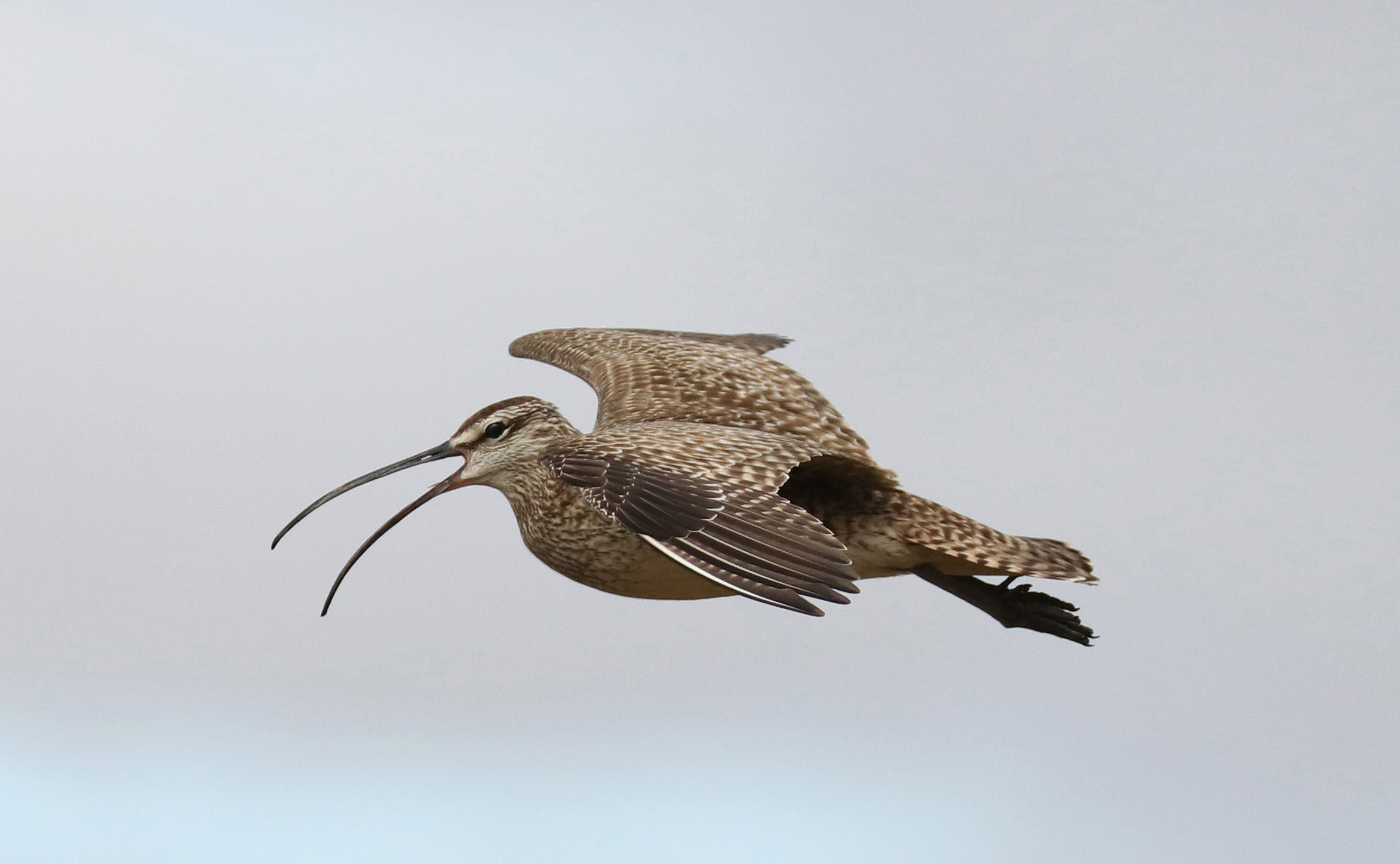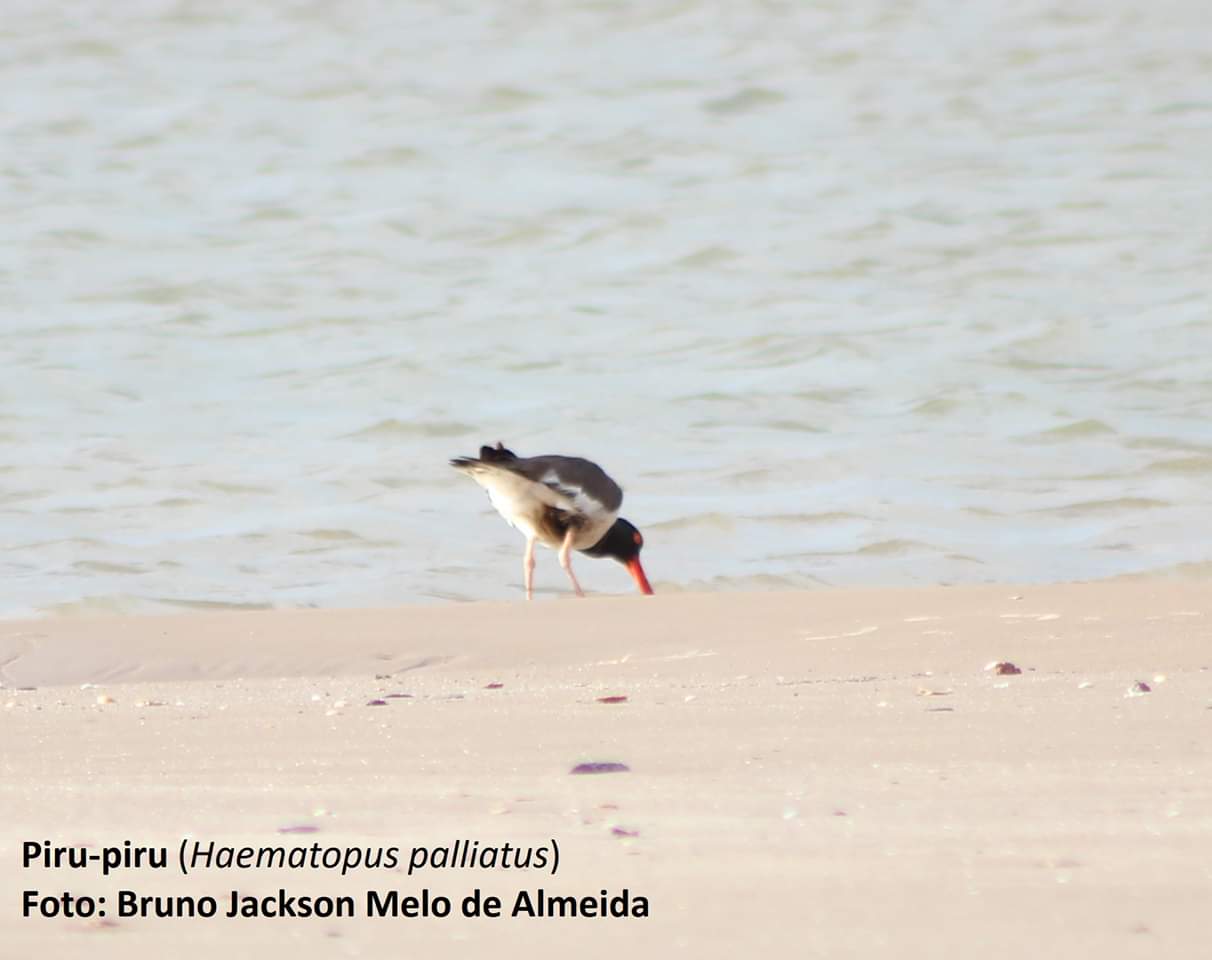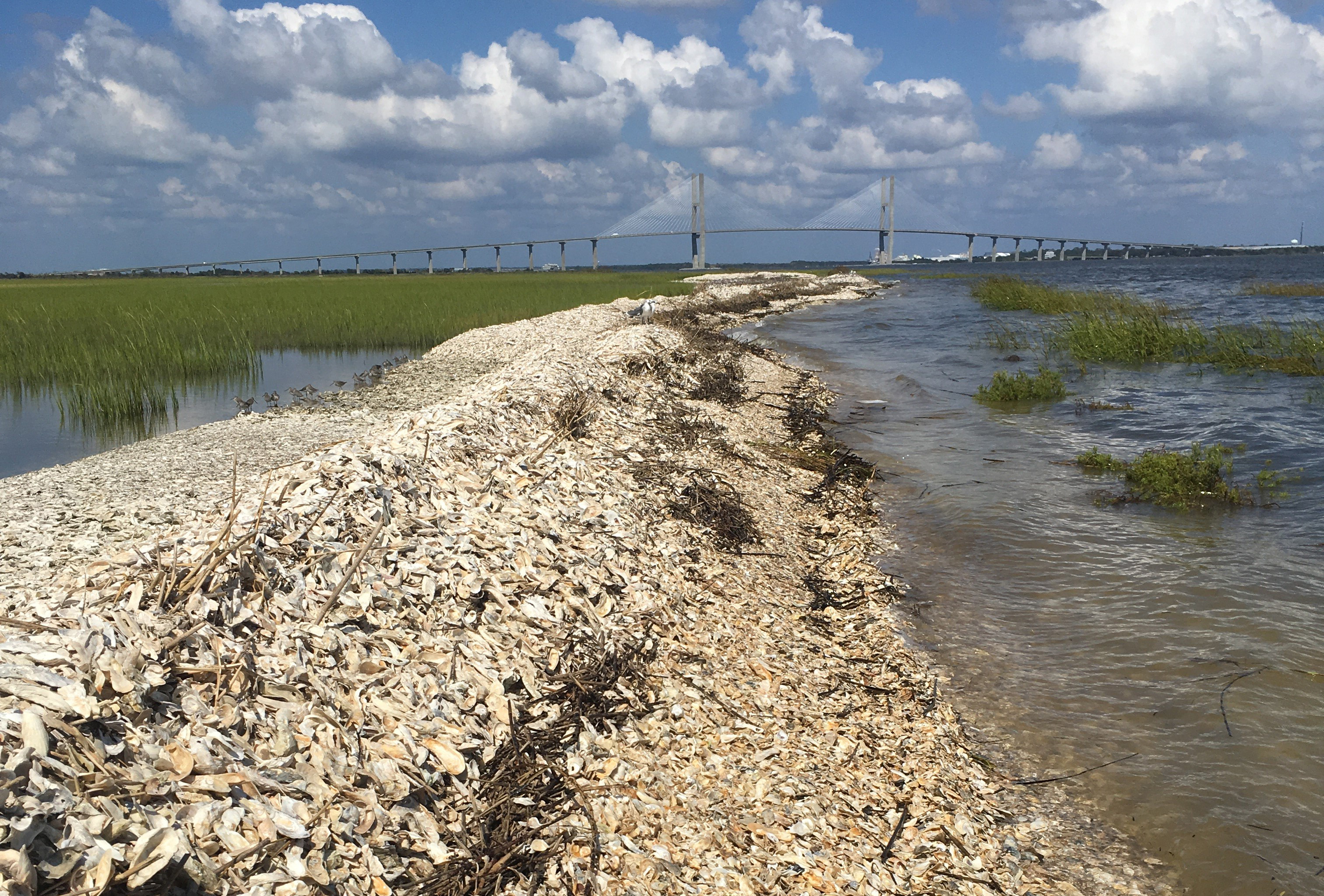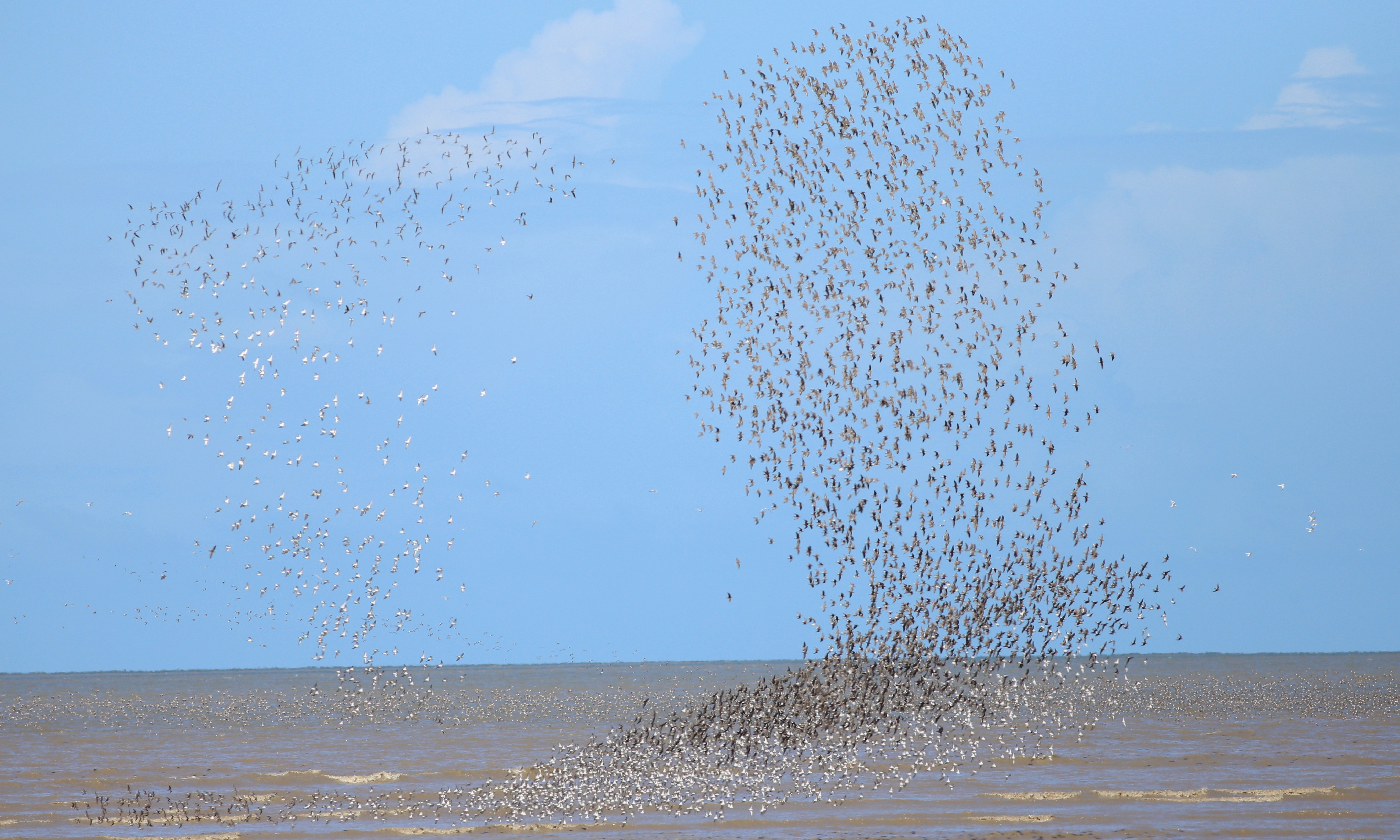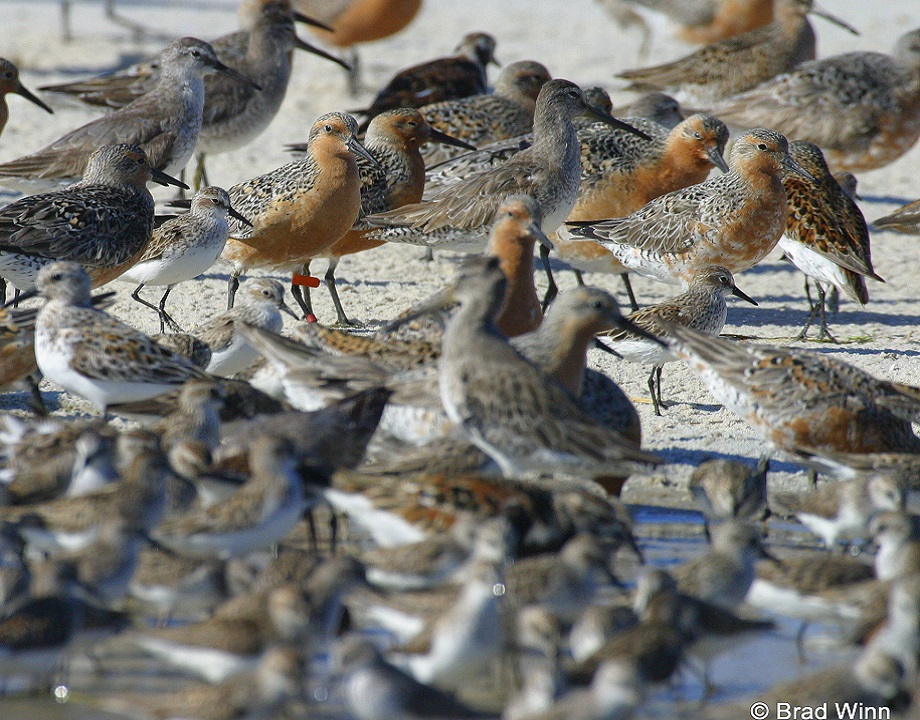Shiloh Schulte and Abby Sterling
Manomet shorebird scientists
In early September we tracked the migration of a GPS-tagged Whimbrel named Katakturuk from her nesting grounds in the Alaskan Arctic to a small mangrove creek on the north coast of Brazil. This migration included a remarkable 5,000 mile, five-day non-stop flight over the Atlantic from Hudson Bay to Brazil.
Just as Katakturuk arrived on her winter territory, a massive slow-motion environmental disaster began to unfold. Tar balls and crude oil sludge began to appear on the beaches and offshore waters of the northeast coast of Brazil. Over three months the oil washed in and spread along the coast, ultimately covering over 3700km of shoreline in 11 states. The oil is heavy, viscous crude and remarkably no one is sure where it is coming from. It may be coming from one or more “dark” ships, tankers operating with tracking transponders turned off that dump large amounts of contaminated bilge water and fuel. There are currently several suspect shipping organizations, but no culprit has been positively identified. Without knowing the source and amount of oil lost it is impossible to know how much more damage is still to come. (For more information and photos from this spill, click here, here , or here.)
Regardless of the source, the impact of the spill is devastating. The north coast of South America is home to millions of wintering shorebirds. Most of the Semipalmated Sandpipers in the world spend the winter here, along with thousands of Whimbrel, Godwits, Dowitchers, Stilts, and many other species. Every shorebird that comes in contact with this oil is at serious risk. From our work in the Gulf of Mexico after the Deepwater Horizon spill in 2010, we know that even small amounts of light oiling can affect shorebird flight dynamics and thermoregulation. Oil ingestion through preening and contaminated prey leads to hydrocarbon concentrations in the blood and likely affects reproductive success. Anything more than that and a contaminated bird is at risk of dying within hours or days depending on the level of contamination.
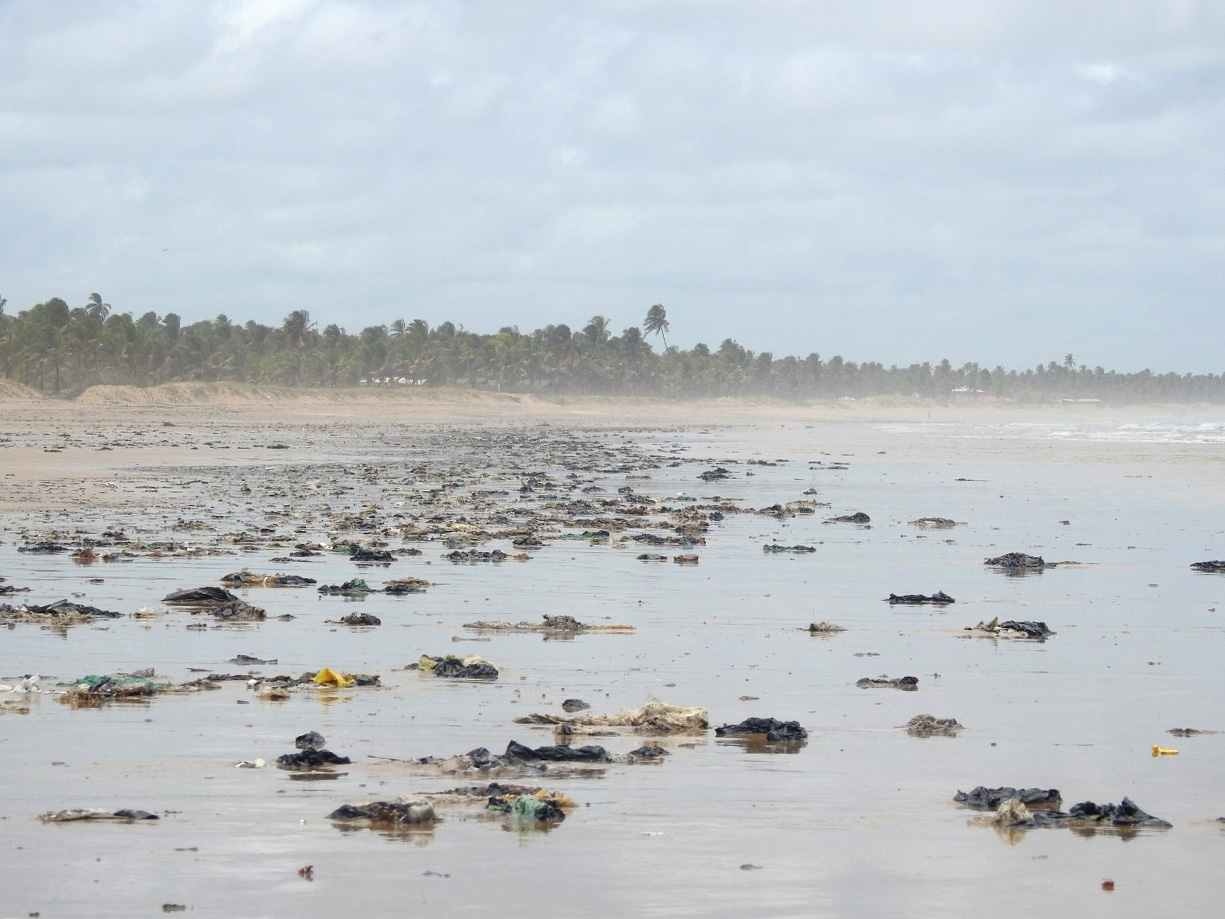
After the Deepwater Horizon spill, oil workers attempted to recover and disperse the oil before it could come ashore. Despite being in the heart of the oil industry working area these massive efforts were unable to prevent a huge environmental disaster. Oil washed ashore all along the northern Gulf of Mexico, with Louisiana being impacted most severely. Where oil did come ashore, beaches were closed and a multi-year cleanup and recovery effort was initiated. Where the oil was cleaned up it was handled as toxic material by crews with hazmat training. Even with billions of dollars poured into this effort, the Gulf of Mexico will never be the same. Some estimates put the number of birds killed by this spill at 1,000,000. We do not know the extent of the damage to the marine invertebrate community that serves as the prey base for hundreds of species, or the long-term impacts of sub-lethal exposure to oil.





 Back to all
Back to all
